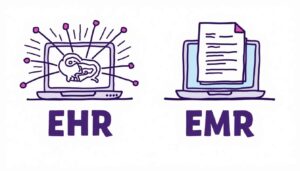5 Strategies for Remote Student Engagement
10 Sep 2021 By: Mary Dellosa
Updated

In remote learning, student engagement is vital for success. Without physical interaction, virtual platforms must create a sense of connection. Using innovative strategies and effective communication, educators can keep students engaged and motivated. Tools like WritePaper can also support students in managing their academic workload, helping them stay on track with assignments and deadlines. This article explores five ways to stay connected with students remotely, covering the importance of engagement, technology use, challenges, and evaluating these strategies’ success. Let’s dive in!
Understanding the Importance of Student Engagement in Remote Learning
Engaging students in remote learning means more than just moving the curriculum online. It involves keeping their interest, involvement, and active participation. Engaged students understand and retain material better. It also promotes a positive attitude towards learning and builds connections with peers and instructors.
Building a community in a virtual classroom is key for student engagement. When students feel included, they’re more likely to join in discussions and group work. Encouraging them to interact and collaborate helps them connect with others, making learning more enjoyable and effective.
Using real-world examples in remote learning helps keep students interested. When they see how lessons relate to their lives and future jobs, they want to learn more. Making lessons relevant and encouraging thinking makes the material stick better and keeps students engaged.
The Role of Technology in Facilitating Engagement
Technology boosts student engagement in remote learning. It offers many interactive tools and resources that grab students’ attention. Virtual whiteboards and educational games create dynamic learning experiences. Using technology well makes the virtual classroom more engaging for students.
Using multimedia elements like videos, podcasts, and simulations boosts student engagement in remote learning. These tools cater to different learning styles, making learning more personalized. Multimedia helps students understand complex concepts better, meeting diverse needs effectively.
Trending Now
The EdTech industry is rapidly expanding, projected to reach $433.17 billion by 2030, driven by innovative educational solutions and the integration of technology in traditional classrooms. Key trends shaping this growth include the rise of flexible and hybrid learning models, immersive visual learning experiences, advanced video technology, AI in education, and personalized learning experiences. These advancements enable educators to engage students more effectively and tailor learning to individual needs, utilizing tools like AI-powered platforms and gamification techniques. This evolving landscape promises to transform how education is delivered and accessed globally.
As we look ahead, key trends in EdTech include AI integration in classrooms, evolving from a novelty to a routine tool for creativity and innovation. Pretesting is gaining traction, shown to help retain information better than traditional methods. There’s a push for authentic learning experiences over rote memorization, requiring creative and reflective assignments. Additionally, tactile learning, including pen-and-paper tasks, is making a comeback due to concerns about screen time’s impact on mental health. Finally, schools are likely to reduce the number of EdTech tools they use, favoring simplicity and security
The Psychological Impact of Remote Learning on Students
Recognizing the psychological impact of remote learning on students is crucial. The absence of physical presence, social interaction, and routine can harm their motivation and well-being. Empathy and understanding are key. Offering emotional support and fostering a supportive virtual community helps students feel connected and motivated. Additionally, accessing professional thesis writing services can ease academic stress by helping students manage heavy workloads more effectively.
Encouraging self-care and mental health awareness is vital in remote learning. Teachers can include activities like mindfulness and stress relief in their lessons. Caring about students’ well-being helps create a supportive and loving learning space.
Strategies for Enhancing Student Engagement Remotely
Now that we understand the importance of student engagement, let’s explore some ways to keep students active in remote learning. Student engagement is crucial for learning, especially with remote distractions. Using creative strategies, teachers can make lessons more interactive and exciting, keeping students motivated and focused.
Utilizing Interactive Online Tools
One way to boost student engagement is by using interactive online tools. These can include virtual simulations, quizzes, and multimedia presentations. Adding these elements makes learning more dynamic and allows students to participate and apply their knowledge. Tools like an AI PPT maker can also simplify the creation of engaging presentations, helping educators quickly design visually appealing slides that capture students’ attention.
Interactive online tools make learning fun and cater to different styles. Visual learners enjoy simulations, while quizzes help auditory learners. Offering various tools ensures all students stay engaged and active in learning.
Encouraging Peer Collaboration in a Virtual Environment
Collaboration is key to learning. Though remote learning makes peer interaction harder, it’s still possible. Virtual group projects, online forums, and study groups help students work together, share ideas, and learn from each other.
Peer collaboration boosts engagement and builds critical thinking and communication skills. Virtual group projects teach teamwork, problem-solving, and new perspectives. Fostering community and teamwork in a virtual setting creates a richer learning experience.
Communication: The Key to Remote Student Engagement
Effective communication is key for remote student engagement. Clear, timely messages set expectations, clarify doubts, and keep everyone connected. Here are some techniques for effective communication in a virtual classroom.
Remote learning has unique challenges that can be overcome with the right communication strategies. Use clear, simple language and consider diverse student needs. Tailoring communication to different learning styles and preferences enhances engagement. Offer multiple channels like email, forums, and virtual office hours to ensure students can connect with instructors and peers.
Related Articles:
Effective Communication Techniques for Remote Learning
In remote learning, use clear and simple language. Avoid jargon and unnecessary complexity. Use visuals like infographics to convey information effectively. Offer regular chances for students to ask questions and seek clarification.
Engaging students in remote learning means making it interactive and fun. Use videos, podcasts, and cool presentations to keep things interesting. Add polls, quizzes, and group chats to get everyone involved and build a sense of community.
Building a Virtual Community through Communication
Building a virtual community helps students feel connected. Encourage open discussions, virtual meetups, and group projects. Use icebreaker activities so students can get to know each other. A supportive virtual community keeps students engaged and motivated.
Establishing a sense of belonging in a virtual classroom starts with personalized communication. Use students’ names, give individual feedback, and recognize their contributions. This creates an inclusive and supportive environment. When students feel they belong, they participate and engage more.
Overcoming Challenges in Remote Student Engagement
Engaging students remotely can be challenging. Let’s explore ways to overcome these obstacles and ensure student participation.
Addressing Technical Issues and Accessibility
Technical issues and accessibility barriers can hinder remote learning engagement. Educators should offer clear instructions and troubleshoot common tech problems. Ensure all materials are accessible, considering internet connectivity and device compatibility.
Consider the diverse needs of students with disabilities. Provide alternative formats, like audio recordings or transcripts for videos, to ensure full participation. Work with support services to implement accommodations and assistive technologies for inclusivity and accessibility.
Balancing Flexibility and Structure in Remote Learning
Remote learning offers flexible scheduling and pace. However, balance flexibility with structure. Set clear expectations and deadlines, but accommodate individual circumstances. Communicate regularly with students to keep them on track and supported.
Encouraging engagement through interactive activities and discussions helps maintain community in remote learning. Group projects, virtual study sessions, and online forums promote collaboration and peer learning. A supportive and interactive online community boosts engagement and enriches the learning experience for everyone.
Evaluating the Success of Remote Student Engagement Strategies
Continuously evaluating remote engagement strategies is key to improving learning. Let’s explore ways to monitor progress and gather feedback. Remote learning has its challenges and opportunities. By finding good ways to measure student engagement, teachers can make learning better and build a strong virtual community.
A well prepared and engaging teacher is a catalyst. A spark that creates the desire to learn in our students.
-Robert John Meehan
Monitoring Student Participation and Progress
Monitor student participation and progress using digital platforms and tools. Analyze engagement metrics, such as completion rates and forum activity. Identify areas where student engagement may be lacking and adapt your strategies accordingly.
Additionally, use data analytics tools to track student behavior and trends. These insights help educators tailor their engagement strategies to meet the diverse needs and preferences of students in online learning.
Gathering Feedback and Making Adjustments
Regularly gather feedback from students to understand their experience. Offer chances for anonymous feedback to encourage honesty. Use this feedback to adjust your teaching methods, course content, and engagement strategies.
Implement surveys or focus group discussions to understand student perspectives better. Engaging students in the evaluation process empowers them and fosters a collaborative learning environment where feedback is valued and used for improvements.
Conclusion
Student engagement is key to successful remote learning. By recognizing its importance, using technology effectively, fostering good communication, overcoming challenges, and continuously evaluating strategies, educators can boost engagement. These five ways to stay connected with students remotely will create a vibrant virtual learning environment and ensure academic success.
As you strive to keep students engaged in remote learning, remember the importance of a strong support system. HelpSquad BPO offers virtual assistant and 24/7 customer service solutions starting at just $8.50 per hour. Our bilingual agents assist with customer support, back-office tasks, and research, letting you focus on delivering top-tier education. Start your trial today and see how HelpSquad BPO can enhance your virtual classroom.


